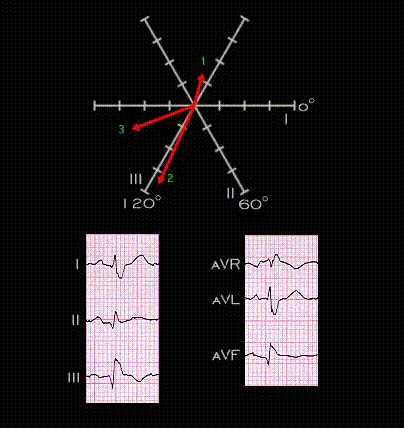
The vector loop shown here rotates in a clockwise direction to encompass these three spatial vectors. It demonstrates the superior direction of the initial vector, the right axis deviation of the main QRS vector and the slowed terminal component caused by the right bundle branch block. The combination of right bundle branch block and right fascicular block is an example of bifascicular block, so named because if represents slowing of conduction or block in more than one fascicle of the conduction system
